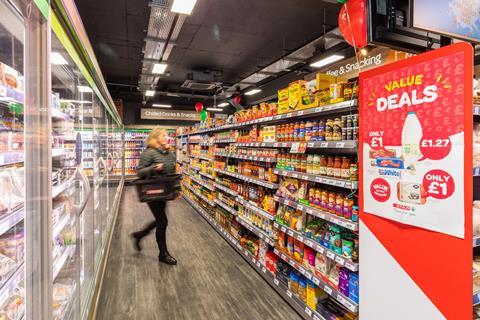
Being any kind of retailer right now feels like being strapped to an RRP rocket. With political uncertainty and Covid supply challenges lighting the blue touch paper, record inflation and rising input costs have seen prices reach lunar altitude.
Take everyday items like butter and spreads. Prices have rocketed by over a fifth (20.4%) in the last 12 months [Kantar 52 we 19 Mar 23] alone. Multiply that effect over a whole basket and suddenly customers are scratching their heads wondering where their wages went while retailers see margins go up in smoke.
Britvic believes that basket spend will inevitably dip as customers look to cut back. “Consumers are looking to make their money stretch as far as possible for them, and as part of this, we expect to see smaller transactions and smaller pack sizes come into play,” says retail commercial director Ben Parker.
Nevertheless, he is confident that c-stores will weather the storm. “In times of economic stress, the convenience channel plays a key role and has always responded well.”
However, others have raised concerns over whether convenience stores will be deemed too expensive. C-store customers expect some kind of premium for local shopping. But the big worry for the sector is that convenience prices now look unrealistic compared to the discounters and online.
“While consumers generally accept a price difference in convenience, the current pressure on household budgets will undoubtedly be putting this under greater scrutiny,” says Ross Davison, head of convenience at Kepak (Foods Division).
“One in six are already shopping less in convenience stores in the last six months, with the number of those prepared to pay more for products versus in a supermarket falling [TWC]”.
Shoppers could well feel they’re seeing prices rise every other week. And it’s a feeling shared on the other side of the counter too.
“I’d say an extra hour of my week is now spent checking prices,” says Best One retailer Kay Patel. “Before you could let products arrive and not straight away have to check your margins. Now the price changes can be astronomical – 20p, 50p or more – and sometimes you’re losing out on margin. You’re constantly wondering what the next price change is going to be.”
Kay cites beer as an example. Alcohol is a category in which his store has plenty of local competition, so getting the price right is vital. He says that less than six months ago he was paying £18.99 for a case of big-name beer (albeit on promotion). Now the list price is more like £31.
“That’s not even in line with any inflation – it’s just ridiculous,” he says.
Meanwhile, in butter he’s now selling Lurpak for around 12% margin, a price that he says “really isn’t viable for me” but is necessary so packs don’t look too expensive on-shelf.

Getting strategic
Kay has always used multiple suppliers to find the best deal going. And now he says he’s having to be even more agile to source stock from suppliers who’ve yet to put the price up.
Over at Connolly Spar, Susan Connolly is taking a similarly strategic approach.
“As a retailer, we are seeing our margins shrink,” she says.
“But we’re finding other ways to combat that. So we’re buying in bulk and planning ahead. That way we can give a great deal to the customer while we’re making great margin for ourselves.”
Susan is philosophical about convenience pricing. She agrees that customers are now looking for value. Yet she says that the nature of c-store shopping means customers can absorb (some) higher prices in return for convenience as long as the value perception is there.
“When the prices originally started to go up it happened first in the mults – and that did us a favour because we suddenly didn’t seem so expensive,” she says.
“I think that people are coming in for that top-up shop and they’re not necessarily price conscious because they’re just grabbing a few bits. Plus, we all just flash our cards now. There’s no reality to what we’re spending when we go to the shop for a can of Coke or pint of milk.”
Despite this, she’s incredibly passionate about putting her ‘value’ message front and centre in the store so customers are aware of it throughout their shop.
“I think the key is to show the value message absolutely everywhere,” she says.
“So you have great, relevant promotions in eyeline as soon as you walk into the store.”
The right value offer also means building trust with customers. This is especially important at a time when the Prime Minister is putting public heat on retailers for perceived ‘profiteering’.
So, when Susan got a chance to buy some Prime she sold it at a reasonable price while other stores bumped the RRP right up past a tenner. She also runs a food bank donation scheme, to deliver value beyond just price to the local community.
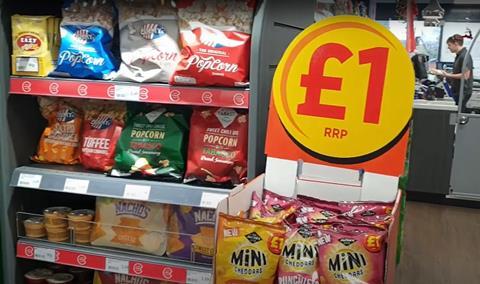
Putting PMPS in play
In c-stores’ promotional arsenal retailers tend to draw for price-marked packs first. That’s not surprising since they’re an easy way to signal value around the store. “PMPs have seen significant growth in recent years and this format will stay increasingly relevant as the cost of living continues to rise,” says Matt Collins, trading director at KP Snacks.
“[They] offer consumers great value for money, with clear pricing, reassuring shoppers that they’re getting a good deal. This format is popular with retailers and consumers alike.”
Many consumers hold the perception that price-marked products (PMPs) provide more value, with 60% (Lumina) of them considering these products as a special promotion displayed on store shelves, claims Budweiser. ”As the cost-of-living crisis persists, this perception is expected to become even more important for consumers who are trying to cut expenses and limit their visits to restaurants and bars,” says Sunny Mirpuri, director for wholesale & convenience at Budweiser Brewing Group.
Britvic also recognises the importance of PMPs. ”Retailers are under increasing pressure as the cost of doing business increases, and one of the ways we’re here to support is through offering soft drinks we know shoppers love, at competitive prices,” says Parker. ”Alongside plain pack options, PMPs are a value draw within the channel. At the same time, we work closely with our customers to ensure that these price-marked options are realistic in offering them positive margins and have taken opportunities to demonstrate our commitment to this with the price-mark points we have in market.”
Rampant inflation has seen the traditional £1 PMP be superseded in key areas like snacks. However, Golden Wonder is adamant that it will stay at a quid for the foreseeable.
“Inflation pressure is forcing many other brands to move above the all-important £1 price-point, but Golden Wonder is committed to putting consumers and retailers first,” says Matt Smith, marketing director for Golden Wonder.
“Having surveyed both retailers and consumers, it was clear how important the £1 price-point is to both.”
“Instead of raising the headline price of our £1 PMPs, we’ve decided to stick to £1. Our new range is in stores now and demonstrates Golden Wonder’s commitment to delivering great consumer value whilst offering strong retailer margins.”
While competition hots up among brands, there’s evidence on the shop floor that serving up PMPs isn’t as straightforward as it used to be.
“Right now it can be cheaper to buy non-price-marked over price-marked [stock] from some suppliers,” says Kay.
“But I’m still taking the hit on margin and buying [PMPs] because it gives customers a benchmark to compare prices against so they actually see that it’s a deal.”
Today the cost-of-living crisis is inspiring retailers to go beyond PMPs. Susan is full of ideas, including a potential toy club where shoppers can pay off Christmas gifts over the year. She’s also taking inspiration from the discounters.
“If you look at the ‘Middle of Lidl’ you can pick up lots of weird and wonderful things and the price points can be around £100 – but people still buy them,” she says.
“So we’ve just got in some fans that are £60 retail, that have been £90 everywhere else, I managed to get a really good deal and that appeals to shoppers. It’s all about giving them deals that are relevant to their needs.”
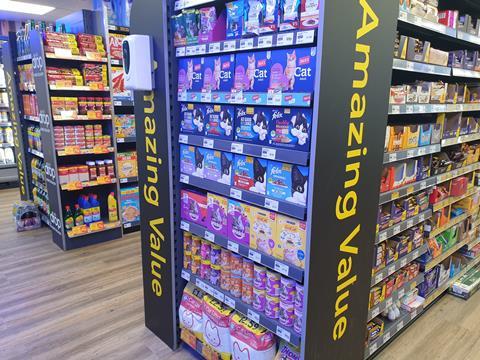
When will prices stabilise?
So where is the RRP rocket going to land? Ultimately, what goes up has to come down, and the mults have already started to drop prices on own-brand milk, butter and bread to give customers some relief.
But that doesn’t mean the ride is over. At the end of last year all the clever money was on inflation dropping by February. This hasn’t happened – and with another interest rate rise to absorb there could be more pain to come.
Challenges and opportunities will abound in equal measure for convenience retailers over the coming year, according to Britvic’s Parker. “While inflationary pressures are likely to continue to mount for retailers in 2023, energy prices are expected to level out towards the end of the year, fostering stronger income growth in real terms in 2024,” he says.
In the meantime, canny c-store retailers can beat high prices by shopping around and buying in bulk where they can, while connecting with consumers through relevant and timely promotions. But the feeling from the shop floor is that eventually something’s got to give.
“You just hope that prices are going to stabilise soon so we can just all take a breath,” says Kay.




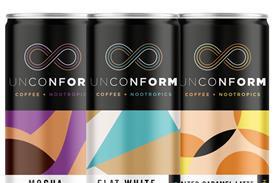

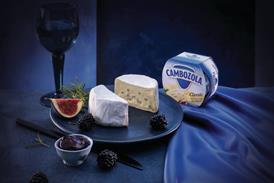
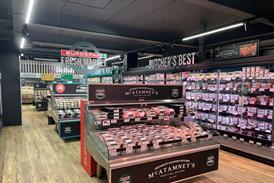



![WG-4003[58]](https://d2dyh47stel7w4.cloudfront.net/Pictures/274x183/4/5/1/353451_wg400358_6083.jpg)






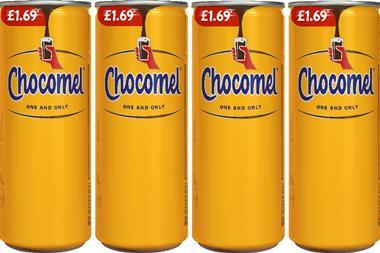

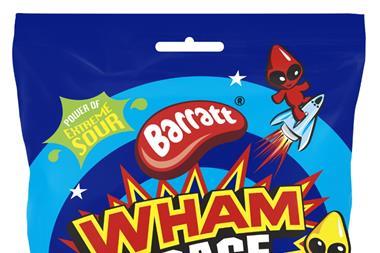







No comments yet